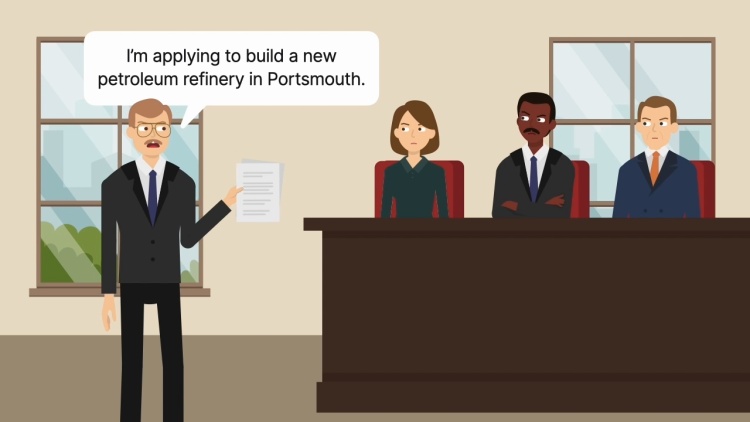Citizens Against Refinery’s Effects, Inc. v. United States Environmental Protection Agency
United States Court of Appeals for the Fourth Circuit
643 F.2d 183 (1981)

- Written by Carolyn Strutton, JD
Facts
The federal Clean Air Act established national standards for major types of air pollutants. The United States Environmental Protection Agency (EPA) (defendant) was tasked with administering the act over the states. Under the statute, the EPA divided each state into Air Quality Control Regions and monitored the level of pollutants in each region. If a particular region within a state had a pollutant level that exceeded the maximum-allowed standard, no development that would add more of that particular pollutant to the region was allowed to proceed until the level was reduced. The EPA worked with noncompliant states to create State Implementation Plans (SIPs), through which the state could reduce pollution levels to the allowable level. States were allowed to include offset programs in their SIPs. These offset programs allowed for the creation of new sources of pollutants, provided that the state found and made a cutback in an existing source of the pollutant that would be greater than the potential addition of the pollutant from the new proposed source. Virginia proposed a SIP that included an offset program for a region that was not in compliance with one pollutant. Under the offset program, the state would stop using a more-polluting type of asphalt in highway projects and switch to a less-polluting type in order to offset the pollution that would be generated by a new petroleum refinery in the region. The EPA approved the offset program and the SIP. A citizens-action group, Citizens Against the Refinery’s Effects Inc. (CARE) (plaintiff) sued the EPA to stop approval of the SIP, alleging that the EPA’s approval of the SIP was arbitrary and capricious. The EPA issued a final ruling approving the SIP, and CARE appealed.
Rule of Law
Issue
Holding and Reasoning (Hall, J.)
What to do next…
Here's why 899,000 law students have relied on our case briefs:
- Written by law professors and practitioners, not other law students. 47,000 briefs, keyed to 994 casebooks. Top-notch customer support.
- The right amount of information, includes the facts, issues, rule of law, holding and reasoning, and any concurrences and dissents.
- Access in your classes, works on your mobile and tablet. Massive library of related video lessons and high quality multiple-choice questions.
- Easy to use, uniform format for every case brief. Written in plain English, not in legalese. Our briefs summarize and simplify; they don’t just repeat the court’s language.





